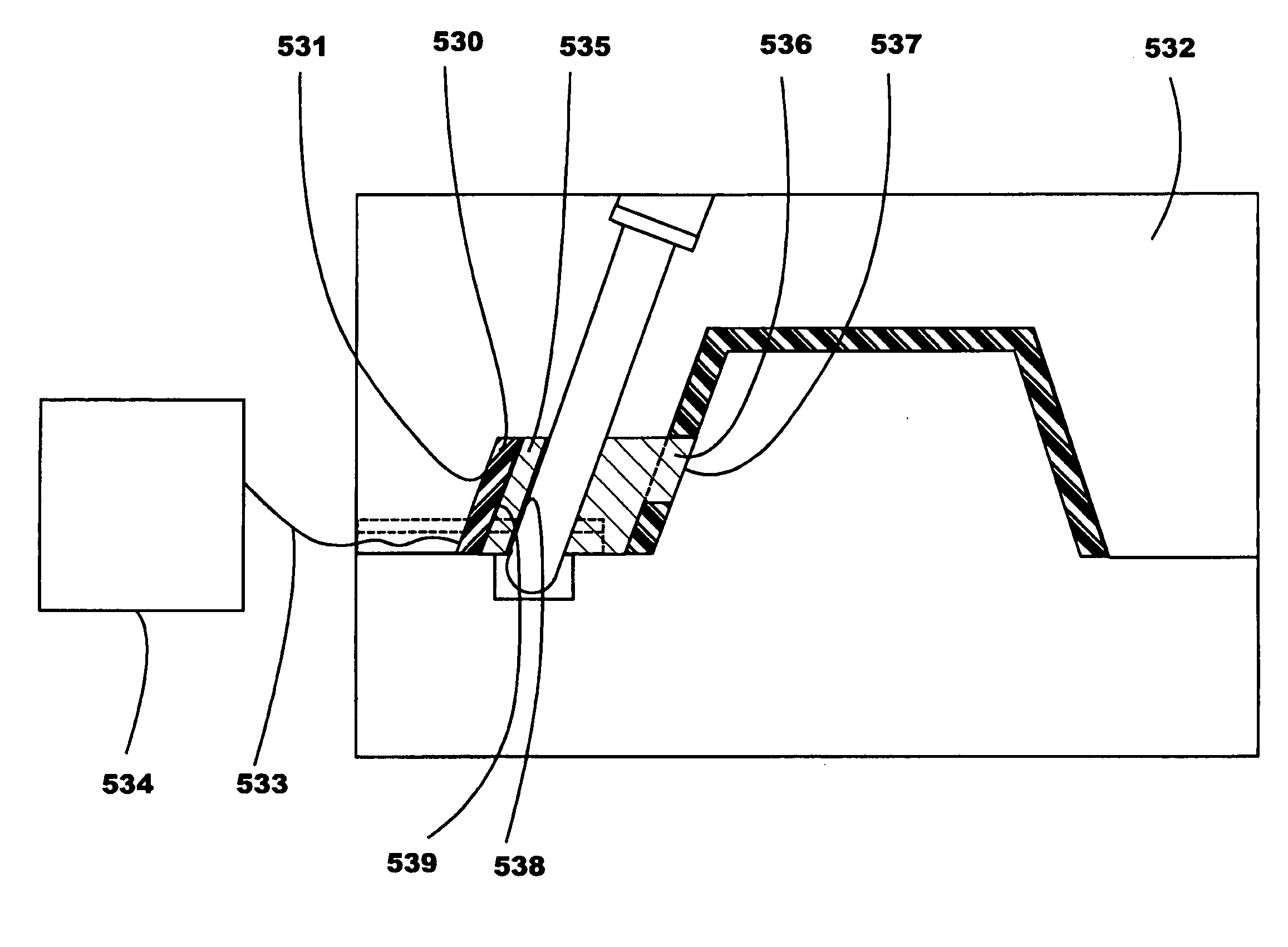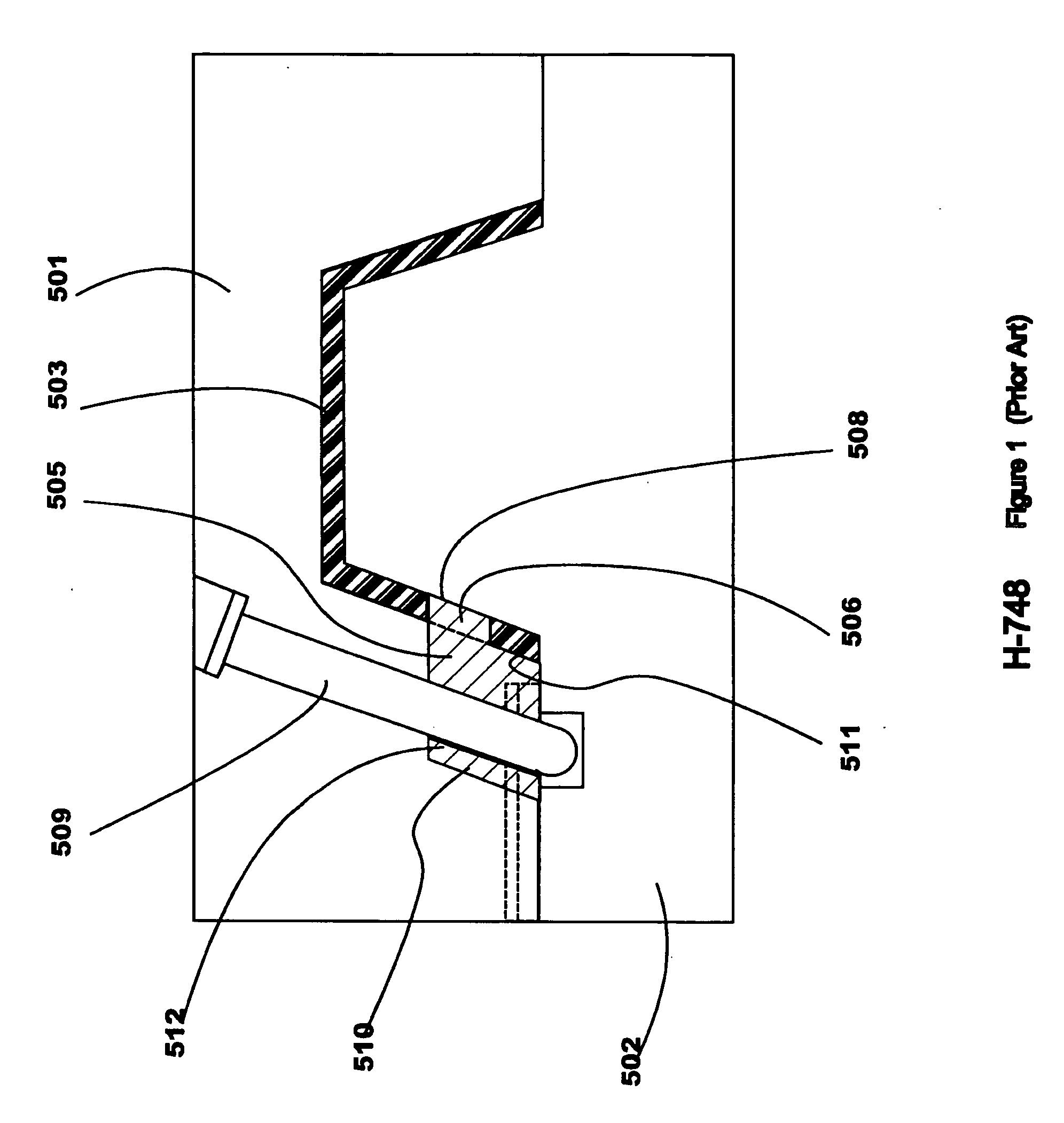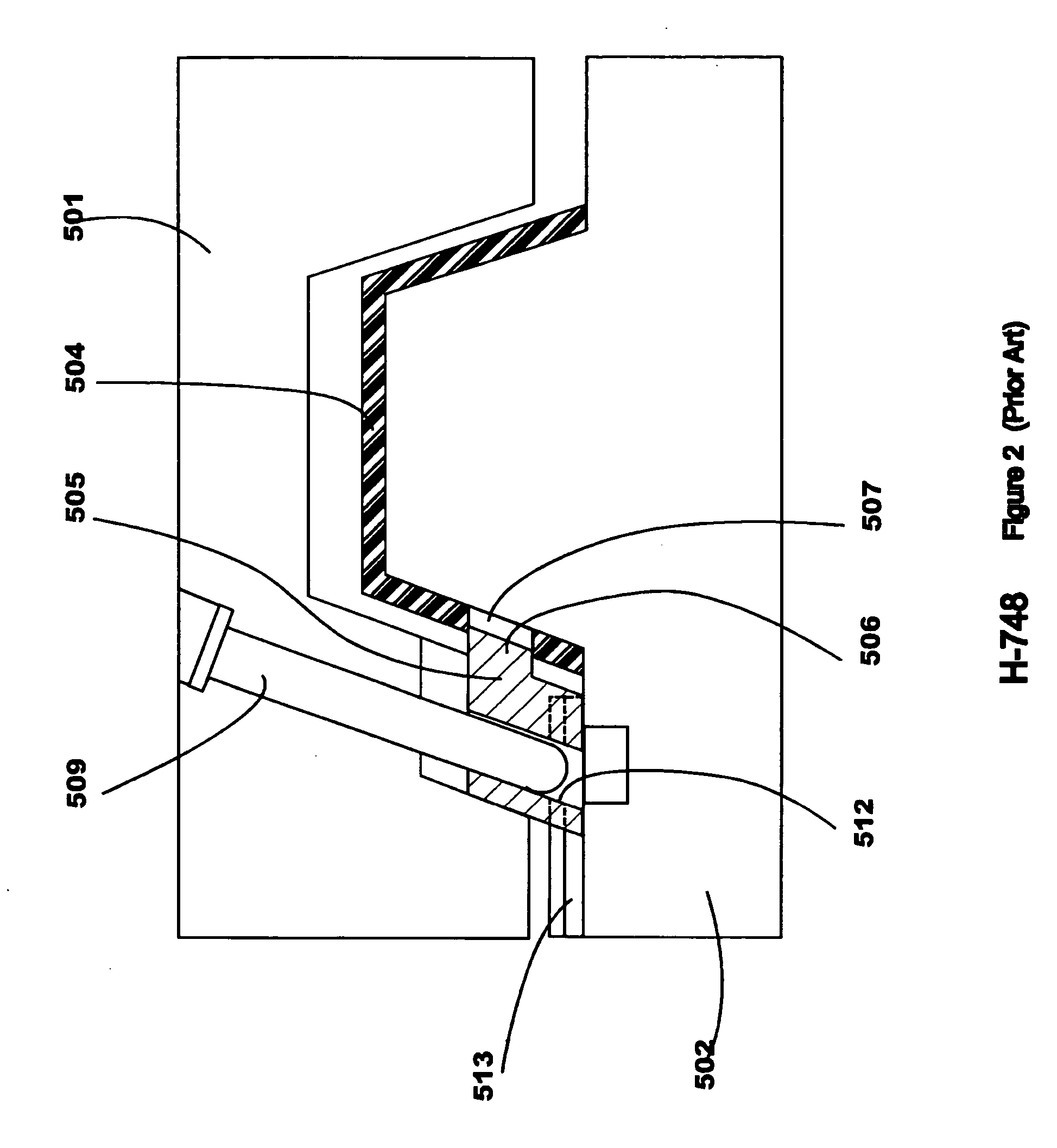Method and apparatus for mold component locking using active material elements
a technology of active materials and mold components, applied in auxillary shaping apparatus, manufacturing tools, food shaping, etc., can solve the problems of not being able to disclose actual measurement and then correct such shifting, and achieve the effect of reducing flash, reducing flash, and reducing flash
- Summary
- Abstract
- Description
- Claims
- Application Information
AI Technical Summary
Benefits of technology
Problems solved by technology
Method used
Image
Examples
first embodiment
2. The Structure of the First Embodiment
[0025]FIG. 6 illustrates a first preferred embodiment of the present invention as applied to the mold shown and described in FIGS. 1-5. A piezoceramic device 530 is attached to a wall of a recess 531 formed in cavity block 532. The piezoceramic device 530 is preferably aligned within the recess 531 so that it is adjacent to a surface of side acting insert 535 within the mold. The piezoceramic device 530 is connected to a controller 534 by a conduit 533, although wireless methods of control are also possible, thereby providing actuation signals to the device 530. The piezoceramic device 530 is oriented such that it expands against the surface of the side acting insert 535, thereby allowing the actuation of the device 530 to press the side acting insert protruding form 536 securely against the core side wall 537. It is also envisioned that the device 530 may be positioned in other locations within the mold assembly, so long as the location allow...
second embodiment
4. The Structure of the Second Embodiment
[0033]FIG. 7 illustrates a second preferred embodiment of the present invention. A preform mold stack 540 includes a core 541, cavity 542, gate insert 545 with hot runner nozzle 546, and two side core inserts 543a and 543b typically known as neck ring inserts. Each side core insert 543a and 543b is mounted on a movable slide rail 547a and 547b respectively that are retained by gibs (not shown) on a movable stripper plate 549. A wear plate 548 fastened to the stripper plate 549 provides a suitable surface on which the side core inserts slide. The slide rails 547a and 547b, and consequently the side core inserts 543a and 543b mounted thereon, are moved perpendicularly with respect to the center axis of the stack 550 by cams (not shown) in a conventional manner during the ejection portion of the molding cycle. The taper locking surfaces 551a, 552a and 551b, 552b, respectively, of the side core inserts 543a and 543b wear as previously described w...
third embodiment
6. The Structure of the Third Embodiment
[0038]FIG. 8 shows a third preferred embodiment of the present invention. The preform mold stack 560 is similar to that shown in FIG. 7, but differs in that the piezoceramic insert devices 561a and 561b are positioned to apply a force directly against each side core insert 562a and 562b, respectively, instead of against the slide rails 563a and 563b, as is the case in the embodiment shown in FIG. 7. This means that in this embodiment each pair of side core inserts 562a and 562b can be directly acted upon by its own pair of piezoceramic inserts 561a and 561b. When the present embodiment is implemented in a multi-cavity injection mold, the controller 564 may be programmed to provide individual signals to activate each pair of piezoceramic inserts, thereby allowing each molding stack to be “tuned”. Thus, if molded parts are found to contain parting line flash that varies between the molding stacks in the mold, each unique variation can be individ...
PUM
| Property | Measurement | Unit |
|---|---|---|
| dimension | aaaaa | aaaaa |
| electrical | aaaaa | aaaaa |
| pressure | aaaaa | aaaaa |
Abstract
Description
Claims
Application Information
 Login to View More
Login to View More - R&D
- Intellectual Property
- Life Sciences
- Materials
- Tech Scout
- Unparalleled Data Quality
- Higher Quality Content
- 60% Fewer Hallucinations
Browse by: Latest US Patents, China's latest patents, Technical Efficacy Thesaurus, Application Domain, Technology Topic, Popular Technical Reports.
© 2025 PatSnap. All rights reserved.Legal|Privacy policy|Modern Slavery Act Transparency Statement|Sitemap|About US| Contact US: help@patsnap.com



